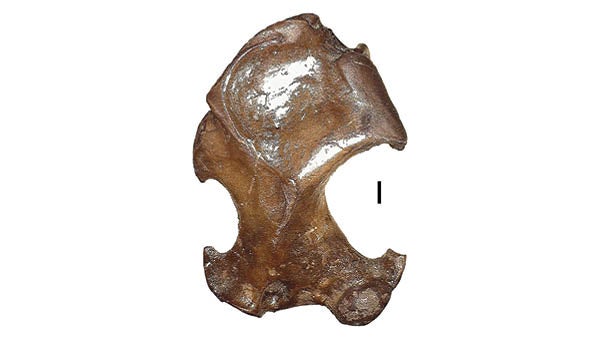Extinct moles latest find at ETSU’s Gray Fossil Site
Published 11:38 am Friday, May 5, 2023

- Photo Contributed/A fossil humerus (upper arm bone) of the new mole species.
|
Getting your Trinity Audio player ready...
|
Headlines coming out of the Gray Fossil Site and Museum, where a one-of-a-kind ancient ecosystem nearly five million years old is preserved, have focused on the larger fossilized animals like rhinos and red pandas.
“It feels amazing to describe and name a new species, and I got to do it twice in one paper,” said Oberg. “I am excited for the dedicated team of wet-screeners and pickers to find even more material for us to publish on.”
But researchers have been paying more attention to the tiny creatures that once roamed the hills and valleys of the present-day Appalachian Highlands.
A new study published in Palaeontologia Electronica is the first to analyze the fossil moles of the site. By comparing fossil bones and teeth with other living and extinct mole species, the researchers identified four different types of extinct moles, including two species that are entirely new to science.
Danielle Oberg, a doctoral student at the University of Arkansas and alumnus of East Tennessee State University’s paleontology graduate program, and Dr. Joshua Samuels, associate professor in the ETSU Department of Geosciences and curator at the site, conducted the research.
“Mole species are usually tied to environmental conditions and soil types,” said Oberg. “This many species at one site is quite special.”
Moles are excellent diggers and voracious predators, contributing to their ecosystems by aerating the soil and feeding on tiny animals, the researchers noted. The moles identified in this study represent a variety of lifestyles from digging to swimming, revealing a unique and diverse ancient community.
The two new species identified in this study are Parascalops grayensis, a relative of the hairy-tailed moles that still dig through the soil of East Tennessee today, and Magnatalpa fumamons, a relative of modern-day desmans, aquatic predators found now only in Europe and Asia. This is the oldest known record of hairy-tailed moles in the world and the first known record of desmans in eastern North America.
The other two moles the researchers identified, Neurotrichus and Mioscalops, have also never been found in this part of the world before, and both lived more generalized lifestyles. Modern-day Neurotrichus (also called shrew-moles) are adept at digging, swimming and climbing. Altogether, this ancient mole community includes a combination of species and lifestyles unlike anywhere else.
“We have four different moles at the Gray Fossil Site, and the lifestyles of those moles are very different,” said Samuels. “This discovery helps improve our understanding of small predators living here in the Appalachian region about five million years ago.”
Many of these mole bones and teeth are less than a centimeter in length. They were recovered thanks to the site’s policy to screen-wash all excavated sediments from the site and to the efforts of the many volunteers and students who sort through the ancient sediment to extract tiny fossils.





